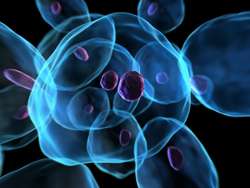Controlling cellular function on nano surfaces

EU-funded researchers applied nano-engineering to the creation and control of biological interfaces with natural and novel synthetic functionalities. The ultimate goal is the steering of cell function for use in stem cell-related therapies.
Cellular functions within living organisms are extremely complex and highly dependent upon pH and concentrations, molecular interactions, and many other parameters.
The ability to control and monitor cellular functions on nano-patterned substrates presents many difficulties and, at the same time, many exciting possibilities.
European researchers initiated the ‘Nanoscale surface cues to steer cellular biosystems’ (Nanocues) project to create a technical platform to be used in the design and fabrication of nano-based biotechnological systems.
The ambitious project included all levels of system development including materials, nano-structuring, chemical processes, and biomolecular interactions. The ultimate goal was controlling cellular function on synthetic substrates.
In order to realise such a complex technical platform, scientists required nano-fabrication methods to produce nano-patterned non-fouling surfaces with functional biomolecules.
To this end, extensive research was done on surface functionalisation including the study of self-assembled monolayers and surface morphology control. Intricate understanding of surface forces in nano-sized objects was also critical given the very high surface area-to-volume ratio of miniaturised objects.
Characterisation of interfaces between synthetic materials and living cells, between molecules on substrates, and between cells at biological interfaces required novel tools yet to be developed.
Despite the obstacles, the Nanocues project used nanoscale engineering to create functional biological interfaces with natural and new artificial functional properties.
The ultimate goal is to apply this technology to stem cells, undifferentiated cells theoretically capable of giving rise to all other cells, thus steering cellular function in therapeutically beneficial directions.
Provided by CORDIS


















